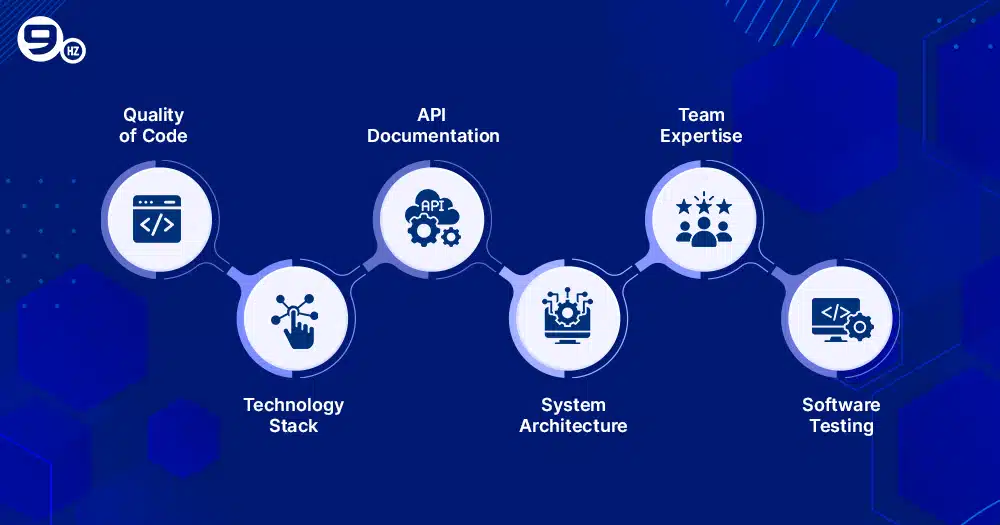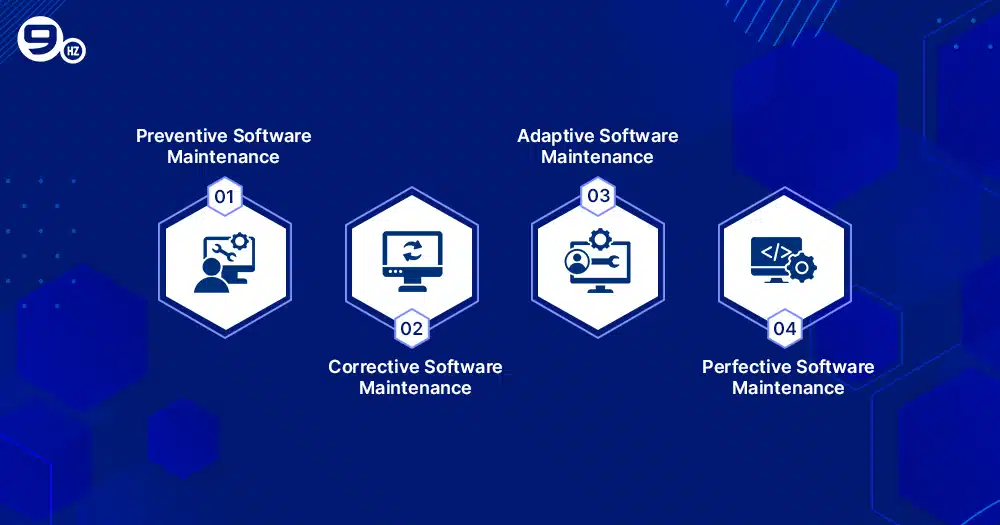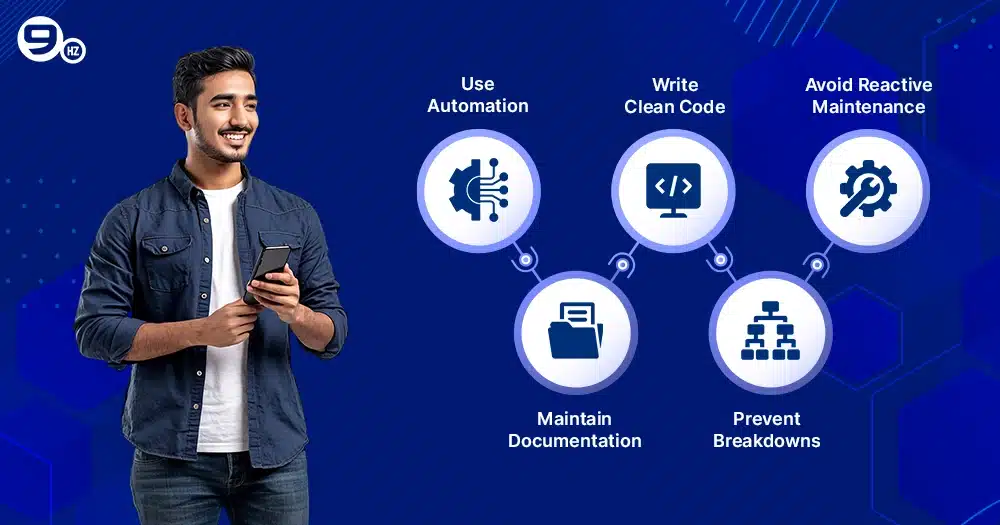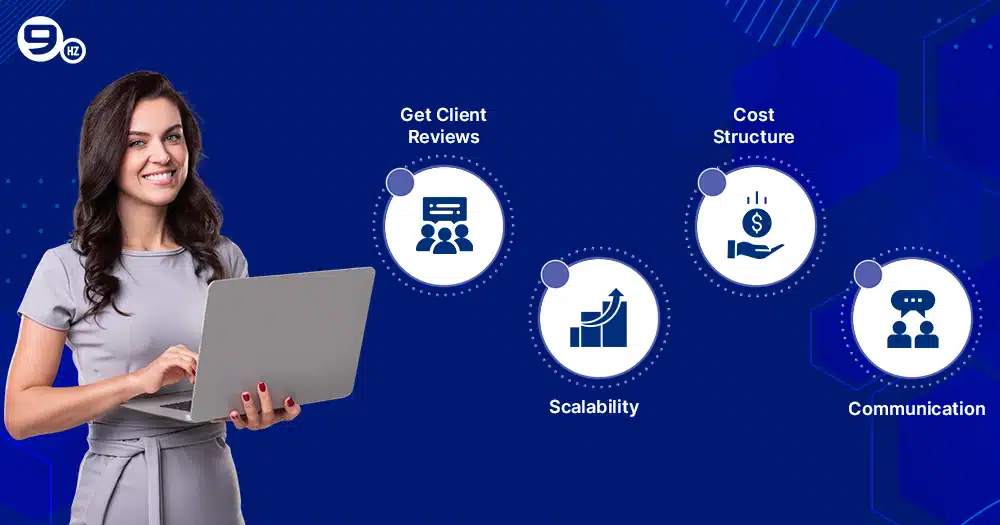Whether you are a startup or a business venture, if you think developing software is enough, think again. Software maintenance has a major role in ensuring its optimal performance, persistent quality, and resolving any bugs. So, in any case, you should not overlook the cost to maintain software while finalising the budget for software development. As we know, software maintenance comes with a cost, whether it’s adding a feature or fixing issues. A reliable software development company can help you estimate and manage these costs effectively. How much does software maintenance cost exactly? It can vary from $5,000 to $50,000 depending on the size and scale of the software.
Big tech companies like Salesforce, a global leader for cloud-based CRM software, invest in ongoing software maintenance like security patches, feature updates, compatibility, and bug resolution. It results in 90% customer retention with reduced churn rate and directly adds to revenue for $30 billion.
Here is a detailed blog to help you understand the software maintenance cost with factors affecting pricing for business needs, objectives, budget and preferences.
What is Software Maintenance?
Software maintenance refers to the process of changing, modifying, and updating software systems to resolve errors, adapt to trends, and improve performance. It caters to a variety of purposes, addressing any default bugs or errors before the software is launched. Being one of the integral parts of the software development life cycle, it has a core focus on eliminating errors and improving the development process to deploy secure products.
For instance, any retail ERP software requires compliance with GST updates, like changes in invoice format or tax slabs. It is a part of software maintenance where the developing team will modify a tax calculation module with integrated APIs and deploy a patch.
Mostly, software development aims to satisfy its users without any glitches. CTO or QA experts are required to focus on the software upkeep cost to address bottlenecks.
Key Factors that Affect Software Maintenance Cost
Developing team to look into estimating measure cost to maintain software, and it depends on multiple factors. From weak API documentation, outdated tech stack, to poor quality code, it can result in complex architecture and affect the software maintenance cost. Let’s take note of these factors and analyse how they influence software maintenance pricing.
Quality of Code
Poorly structured code might complicate the architecture and directly increase maintenance costs. So, developers spend more time comprehending logic and clean module code to reduce repetitive testing and debugging, to reduce long-term maintenance costs and longer development cycles.
Technology Stack
Using outdated and less-used technologies can add to maintenance costs due to limited access for skilled developers and tools. Modern stack offers better community support, debugging tools, and frequent updates that make software maintenance easier. Developing teams rely on a well-supported stack to reduce technical debt.
API Documentation
Insufficient documentation results in time wastage as developers apply reverse engineering before changes, and raise maintenance costs. Comprehensive documentation helps to ease software maintenance with easy identification and logic flows to improve efficiencies.
System Architecture
With poorly designed architecture, it becomes difficult to implement any modification, debugging and scaling for devices. Systems that are built with a scalability approach are cheaper to maintain, while bad architecture might increase complexities and maintenance costs.
Team Expertise
A development team with limited experience in software efficiencies and tech stack will find it difficult to maintain after-launch concerns and increase software maintenance costs. A skilled team can promptly resolve issues, write clean code, and prevent bugs at less cost through minimising downtime.
Software Testing
Manual testing is time-consuming, and there is a risk of human error that increases software maintenance costs. However, automated testing ensures safe and fast deployment that significantly reduces maintenance costs with prompt debugs and hotfixes.
Software Maintenance Cost Breakdown
Based on the industry norms, the average cost to maintain software can constitute 15% to 25% annually of the overall software development cost. Multiple factors affect the overall cost structure based on Software types and features integration. Here we are sharing the software maintenance cost breakdown and its core elements:
| Element | Estimated Cost (USD) | Description |
|---|---|---|
| Corrective Maintenance | $22,000 | Bug fixing and issue resolution |
| Adaptive Maintenance | $18,000 | Updates for OS, API, or environment changes |
| Perfective Maintenance | $28,000 | Enhancements and new feature additions |
| Preventive Maintenance | $12,000 | Code refactoring and documentation improvements |
| Testing & QA | $7,000 | Quality checks and test automation |
| Infrastructure & Tools | $4,000 | Servers, CI/CD, dev tools |
| User Support & Training | $3,000 | Helpdesk, manuals, and onboarding |
| Miscellaneous | $6,000 | Overhead and unexpected costs |
Different Types of Maintenance Plans
Software development has witnessed a major shift in terms of changing technology, process and deployment phases. Transforming from manual to automation, the development and QA teams are exploring multiple aspects of software maintenance rather than sticking to fixing bugs. Here are the following different types of maintenance plans and their importance:
Preventive Software Maintenance
This plan works to make any changes and adapt to the software so it can increase its longevity. A preventive approach might include optimising code, security audits, refactoring and updating documentation to prevent the deterioration of software.
Example: Amazon Web Services or AWS investing for preventive software maintenance with regular refactoring for code and it helps to improve scalability and security for Amazon platform.
Corrective Software Maintenance
This maintenance plan addresses the faults and errors within the software application that impact different parts, including logic, design and code. It helps to detect errors even before customers spot them and helps to save your brand reputation.
Example: Microsoft can invest in issuing regular Patch Tuesdays for fixing security bugs and flaws designed for Windows and Office products.
Adaptive Software Maintenance
It focuses on changing the environment for software, it can be in terms of hardware, software, cloud storage, and even operating systems. Adaptive software maintenance can reflect on policies and rules to modify for vendors or payment procedures.
Example: Netflix followed adaptive software maintenance to integrate updates like smart TV models, OS changes, or browser updates.
Perfective Software Maintenance
This focuses on changing requirements and features that exist with your software system. It can do anything adding as well as removing features, which helps for future enhancements to maintain software integrity and functionalities.
Example: Instagram uses it for the reel section, where frequent changes are required for features and improving UI/UX for stories based on user behaviour and competitive trends.
Hidden or Unexpected Maintenance Costs
Overlooking the proper mechanism for testing and maintenance factors might cause issues related to functionalities, unexpected errors, improper documentation and others. It turns up multiple hidden maintenance costs that expand the budget. Let’s discuss here:
API Changes
These costs are incurred when you take on external services like APIs or third-party libraries due to changes, elimination or depreciation. This can lead to additional maintenance costs for rewriting code, testing and redeployments.
Example: Payment gateways like Razorpay or PayPal require it to update changes for transactions.
Team Turnover
In case any core member of development and QA walks out of the team, this creates a burden of cost to find the right replacement and training for the code. It can slow down the fixes and the deployment of features.
Example: if any senior engineer leaves the organisation, it takes around 4 to 6 weeks to replace them, and it defers maintenance, causing more trouble.
Infrastructure Escalation
Many times, you design software based on your existing user base, and this might increase expenses due to hosting services, software tools, or scaling infrastructure. This comes with unexpected changes as not planned for your original budget.
Example: In case you reach the user limit or free features like GitHub action limits or AWS free bandwidth, you have to pay $400 per month extra for DevOps or cloud service.
Cost Comparison: In-house vs Outsourced Software Maintenance
Most companies are stuck on whether to choose in-house or outsource software maintenance, as both options have specific advantages. An in-house maintenance team can have better control, while outsourcing will be cost-effective. Here is the table for the cost breakdown for a comprehensive comparison:
| Cost Component | In-House (Annual in USD) | Outsourced (Annual in USD) |
|---|---|---|
| Developer Salaries | $60,000 – $100,000 | N/A |
| Tooling & Software Licenses | $5,000 – $15,000 | $2,000 – $5,000 |
| Training & Upskilling | $2,000 – $5,000 | Included or minimal |
| Infrastructure (Servers, DevOps) | $5,000 – $10,000 | $1,000 – $3,000 |
| Management Overhead | $5,000 – $10,000 | Minimal (handled by vendor) |
| Support & Helpdesk | $3,000 – $10,000 | Included in the service plan |
Cost Benefits Comparison
Tips to Reduce Software Maintenance Costs
Software development is a huge investment with advanced features and cross-platform compatibility. On top of that, developing costs, companies are reluctant to add maintenance costs and look for ways to minimise the investment. Here are the following tips to reduce the software maintenance cost:
| Factor | In-House Maintenance | Outsourced Maintenance |
|---|---|---|
| Upfront Investment | High (hiring, infrastructure, onboarding) | Low (vendor handles team, tools, and setup) |
| Long-term Cost Control | Predictable if the team is stable, but fixed overhead remains | Flexible – pay only for what’s used or under contract terms |
| Expertise Access | May require training and hiring specialists | Access to a wide talent pool without long-term commitment |
| Scalability Cost | Expensive (more hires = more cost) | Economical – scale teams and services up/down as needed |
| Tool & License Savings | You bear all software/tooling costs | Often bundled into a vendor’s service pricing |
| Operational Efficiency | High with well-aligned internal teams | High if the vendor is experienced; SLA ensures accountability |
Tip 1: Use Automation
Adding automation to development and testing boosts productivity, delivering consistent development processes with accurate insights. It supports deploying software free from bugs, signifies less complexity and results in lower maintenance costs.
Tip 2: Maintain Documentation
Whether it’s a functional or non-functional error, proper documentation helps to save your time and ease software maintenance. Hence, it minimises the cost of maintaining software with fast and hassle-free issue resolution.
Tip 3: Write Clean Code
Following clean and well-structured code will make it easy to debug with the right standards, using modular design and sharing the best logic design. It significantly reduces time and overall software support and maintenance costs.
Tip 4: Prevent Breakdowns
If you want to reduce software maintenance costs, try to look for ways to prevent malfunctions and errors. So, investing in a preventive maintenance strategy facilitates software scheduling, reviews, and tracking for all technical operations.
Tip 5: Avoid Reactive Maintenance
Reactive maintenance takes a longer time and effort as it fixes issues after they occur, usually used for downtime. Rather, it is advised to proactively use preventive maintenance through performance checks, backups and code reviews.
How to Choose the Right Software Maintenance Partner?
Before selecting the right software maintenance partner, you must assess their communication skills, technical experience and expertise. Without reference checks and research, you might not be able to find the right-fit partner that complies with your project needs, budget and support services. Here are the following ways to choose for right vendor:
Get Client Reviews
Past deliverables show the company’s integrity and help you to find the right one based on your business needs. So, it is advisable to check for the client testimonials, third-party reviews and measure client retention rate.
Scalability
Switching vendors for minor improvements can increase software maintenance costs; it is better to choose a maintenance partner that supports your scalability factors, like user base or product features.
Cost Structure
Every maintenance partner follows their pricing models, offering more flexibility, which comprises fixed price, hourly rate, monthly and pay-per-ticket approaches. Negotiating for software maintenance pricing will get you better tools and reliable services.
Communication
Software maintenance requires effective communication with timely actions. Select the right vendor that shares regular updates through channels like email, Jira, or Slack for escalation and feedback. This can work in a remote arrangement and help to resolve issues.
Conclusion
If you are aiming for a consistent user experience, there is no alternative to software maintenance. Regular software updates and maintenance establish better functionalities and integrated features. Companies follow any of these approaches among Corrective, Preventive, Perfective and Adaptive software maintenance that fits business needs and changing tech demands.
No matter how your development team considers each factor, there is still a risk of errors and bugs after deployment. So, it is required to set a budget for the annual software maintenance cost. Keeping up with the software maintenance plan will help to track real-time progress, debug errors and increase longevity.
Frequently Asked Questions
What is the average cost of software maintenance per year?
The average software maintenance cost might range between $5000 to $50,000, depending on project size, scale, version and platform integrity.
Is software maintenance included in development costs?
No, usually, software maintenance cost is not included in development cost, rather comes as ongoing expenses post launch that covers fixing bugs, feature updates and improvements.
How long should a software product be maintained?
In any case, software should be maintained for at least 5 to 10 years for its complexities, usage, and business value. Ongoing maintenance ensures compatibility, security and performance as the user expectation changes.
What are the consequences of skipping maintenance?
It can lead to complex issues, such as security vulnerabilities, poor performance, dropping user base, system crashes, and at the same time increasing technical debt.













